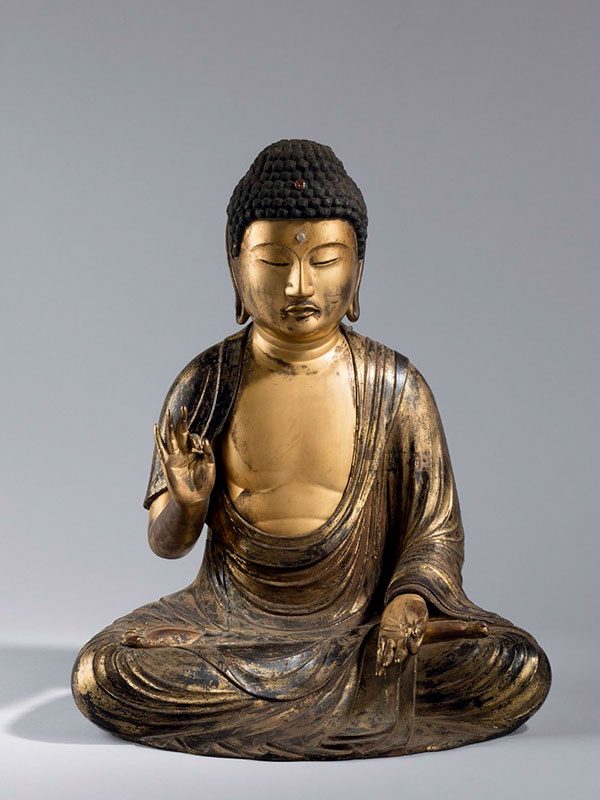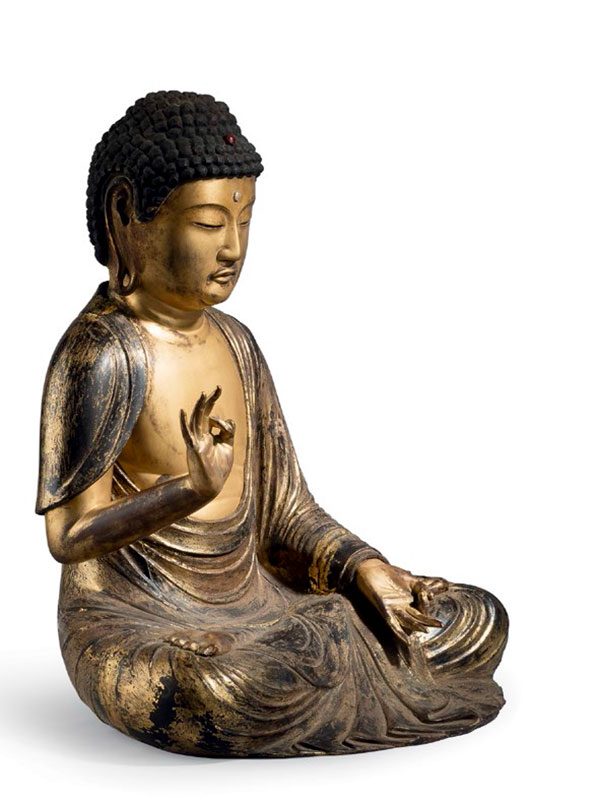Gilded wood figure of the Buddha Amida Nyorai
A large and skilfully carved wood figure of the Buddha seated in lotus position, his right hand is raised with the thumb and index finger clasped together. His left hand rests on his lap, palm upwards, also with the thumb and index finger clasped together. Both hands are held in the raigo-in (vitarka) gesture. The Buddha wears a long pleated robe revealing his bare chest and feet. The face has a serene expression with tightly closed eyes, and the pierced ears have long earlobes that are unadorned. A round, red jewel sits in front of his topknot, nikkei (ushnisha). A translucent jewel appears in the middle of his forehead. The figure was made in two pieces. The Buddha has acquired a fine, golden patina, with some areas of the black ground showing through, and the details of his face are delicately painted.
Stylistically the features of this Buddha – simple, dramatically folded clothing and a peaceful expression – are typical in the tradition of Japanese wood sculpture from earlier eras. This Buddha is Amida Nyorai (Amitabha), the principal deity in Pure Land Buddhism. His hands are held in the traditional raigo-in (vitarka) gesture, which welcomes the souls of his faithful followers into the Pure Land, Jodo.


